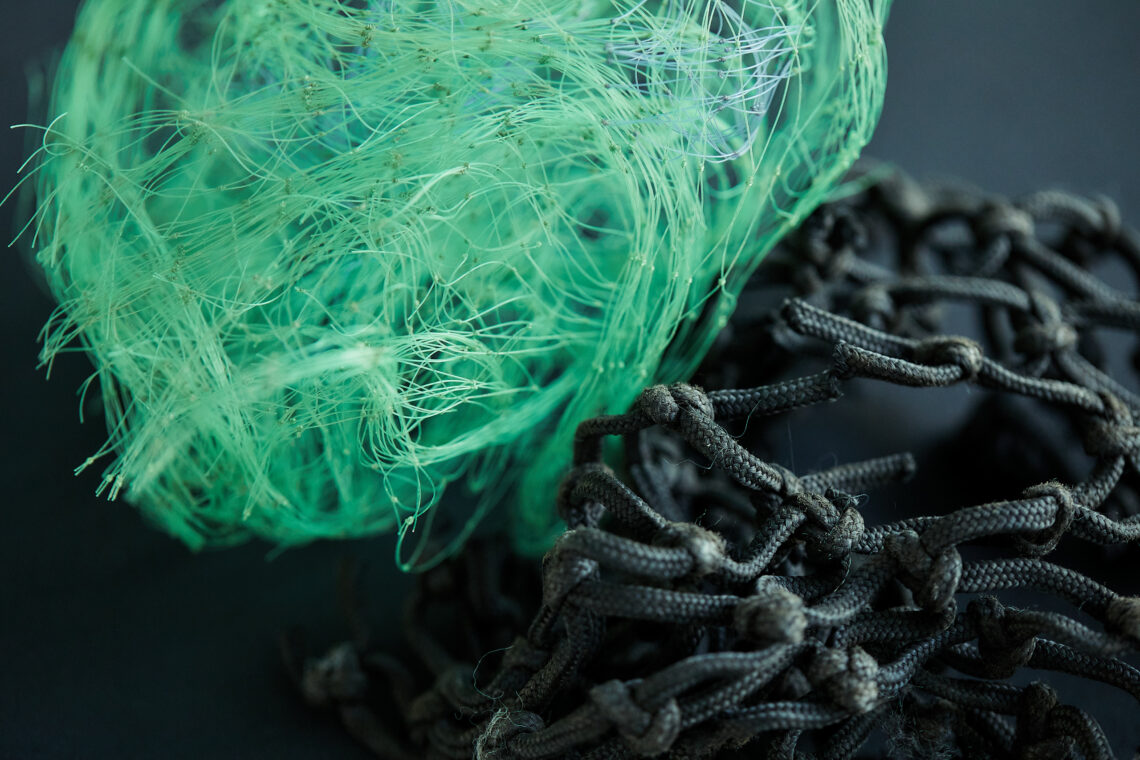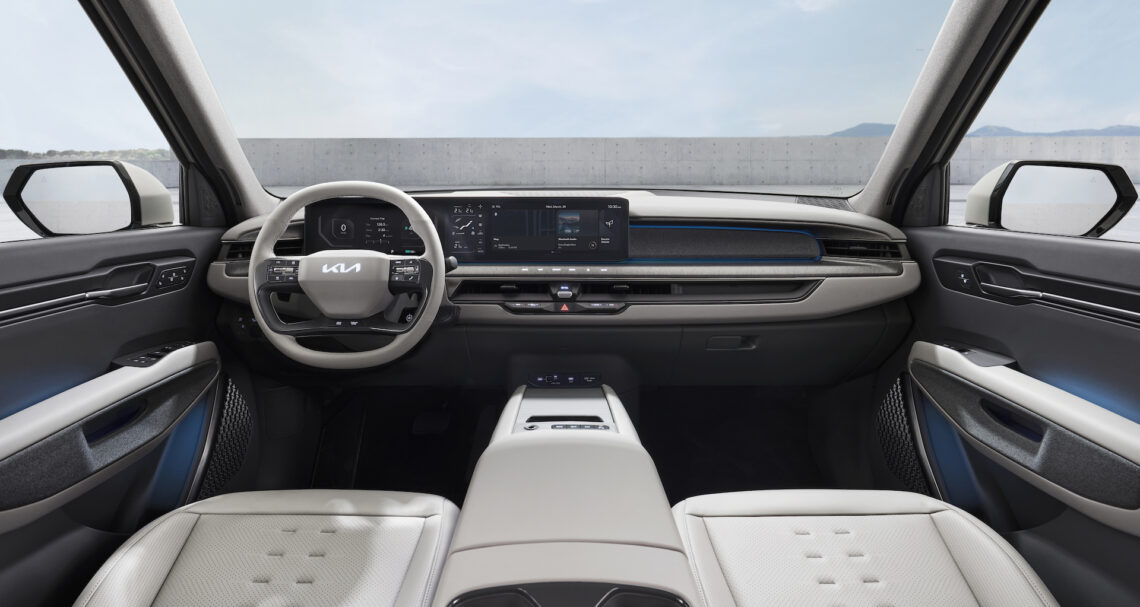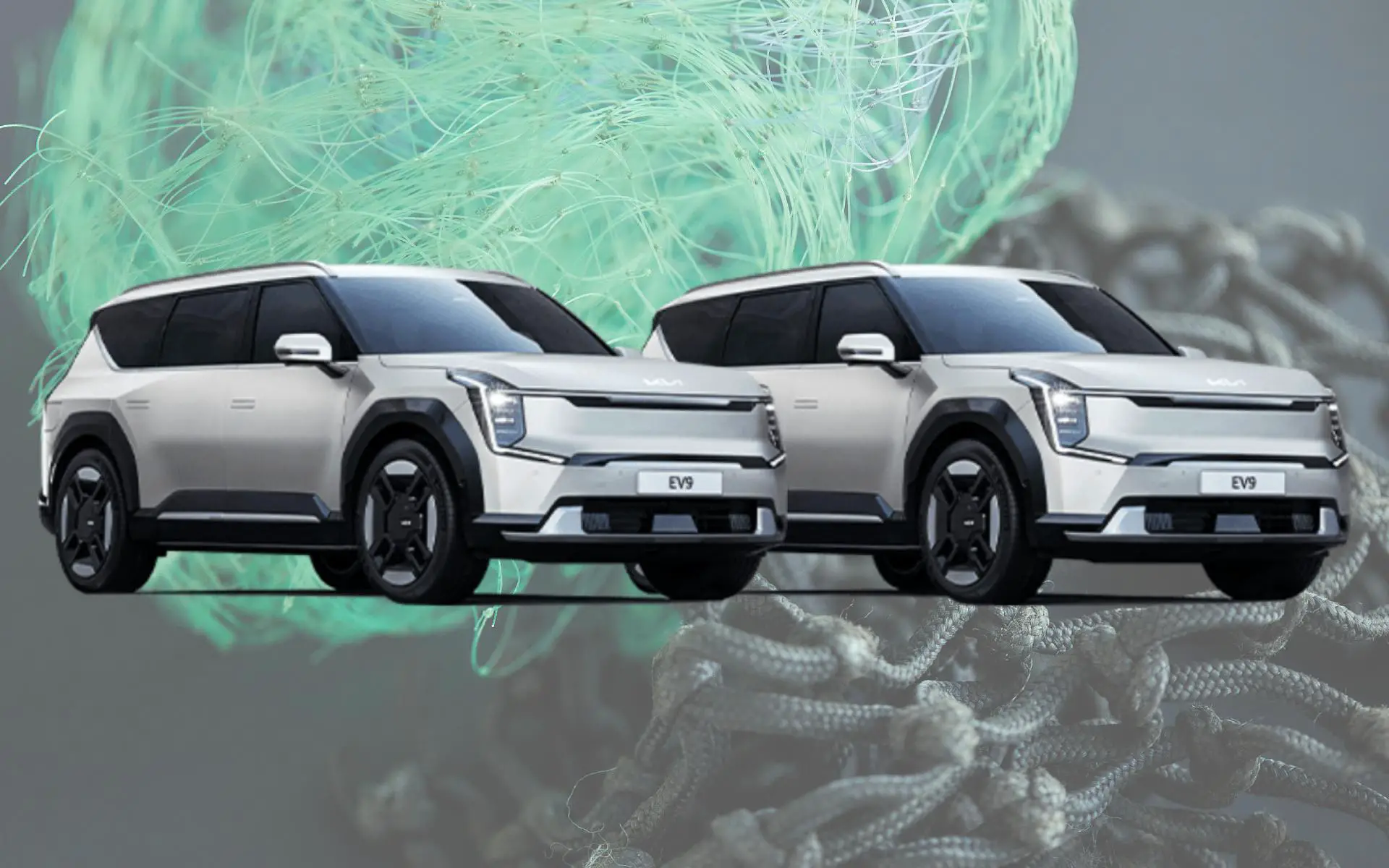Kia EV9: these 10 parts are very durable
Durable materials in different models
Kia has a long history of incorporating durable materials into various models. For example, the interior of the 2014 Kia Soul EV already featured interior materials based on bioplastic and biofibers from sugarcane. Kia has since further scaled up the use of sustainable materials, using recycled PET and discarded fishing nets in addition to plant-based components.
CO2 neutrality from 2045
To further scale up sustainable production – and thus take an important step toward achieving carbon neutrality from 2045 – Kia is now releasing more information about its overarching Design Sustainability Strategy. The strategy is to achieve sustainability on a large scale while finding the best material solutions for all new models.

List of 10 sustainable must-haves
Kia’s first recent action in this area is the phasing out of the use of leather in all new models. The second action is to compile a list of 10 sustainable must-haves that every new model to be introduced should include. The EV9, the new premium electric model based on the groundbreaking E-GMP platform, is the first Kia to feature all 10 must-haves. The only question is: which 10 sustainable must-haves are they? We list them for you below.

1. Bioplastic
Bioplastics are a promising and innovative type of plastic that can be produced using a variety of renewable biomass sources, such as vegetable oils, corn extract, sawdust and sugarcane. The use of bioplastics not only helps reduce dependence on fossil fuels, but also offers the added benefits of diversified sourcing and the use of unwanted chemicals.
The more durable bioplastic is versatile and thus well suited for use in interior components. Whether it is dashboard components, the center console or decorative panels, bioplastic can be found everywhere in the EV9.
2. Post-consumer material (PCM).
Post-consumer material (PCM) is plastic made from recycled, existing products rather than virgin raw materials. The revolutionary material has several advantages that extend throughout the production cycle. The use of this recycled material significantly reduces the amount of plastic waste that ends up in landfills, or pollutes the environment. In particular, Kia applies PCM in the door trim of the EV9.
3. Bio-PU
Kia sees biopolyurethane (PU) as an optimal solution to phase out leather, thereby reducing CO2 emissions and integrating plant components to achieve a more sustainable balance.
Bio-PU is not only a sustainable alternative, but also provides a comfortable seating experience. The very soft-touch material is carefully engineered to provide excellent support, cushioning and durability. Bio-PU is notably found in the seat upholstery of the new Kia EV9.
4. Recycled PET fabric
Polyethylene terephthalate (PET) is one of the most easily recycled plastics in the world, making it ideal for a variety of sustainable applications, from water bottles to clothing.
With its good resistance to shocks, moisture and solvents, it is the ideal fabric for covering interior surfaces. For even greater impact, Kia also uses recycled yarn to make the PET fabric put together, ensuring the durable nature of the interior of the new Kia EV9.
This material is found in numerous parts of the EV9’s interior, including the headliner, sun visors and headrests. Each EV9 interior contains at least 70 recycled bottles.
5. Recycled PET carpet
Kia uses 100 percent recycled PET for the carpets. The brand will also use recycled fishing nets as its base material, helping to solve the serious problem of discarded and lost fishing nets destroying marine life around the world. Each year, about 640,000 tons of fishing gear ends up in the oceans, resulting in the deaths of birds, whales and seals, among others.
By collecting and recycling fishing nets, Kia is not only working to reduce the entry of plastic particles into the water as they break down, but also to reduce the impact they have on the crucial ecosystems of our oceans.
The bottom of the new Kia EV9 is lined with carpet made from recycled PET and fishing nets.
6. Bio PU foam
Polyurethane foam (PU) is a versatile material that can be widely used. Its excellent durability and compression properties also make it an ideal choice for comfortable cushioning in a wide range of applications, including furniture, bedding and footwear.
The Bio PU foam used by Kia is made using natural oils and has the resilience and suppleness of standard polyurethane, but with reduced environmental impact. Bio PU foam is found in the headrests of the new Kia EV9.
7. Organic paint
Organic paint is more sustainable than alternatives made from crude oil and results in less chemical waste that normally results from the production process.
Kia’s organic paint is made from a vegetable rapeseed oil, widely used in the food, biofuel, paint, cosmetics and pharmaceutical industries.
In the EV9, bio paint can be found on the control panels in the doors.
8. BTX-free paint
Kia has proactively addressed the harmful environmental effects of using the combination of benzene, toluene and xylene by adopting a sustainable solution: BTX-free paints.
BTX-free paint provides the same high-quality finish of regular paint while minimizing the use of polluting chemicals. Almost all interior components of the new Kia EV9 are finished with BTX-free paint, except for the door control panels, which are finished with organic paint.
9. Recycled PET yarn
Polyethylene terephthalate (PET) is also used in the yarn used for some interior materials. This recycled PET yarn is found in the stitching of the EV9’s seats.
10. Recycled PET felt
Felt can also be made from recycled PET bottles these days. This material is not only soft and durable, but has the added benefit of providing good acoustic absorption, thus dampening the transmission of sound for an even quieter interior. Recycled PET felt has been used in the upholstery of the rear shelf of the new Kia EV9, among other things.


